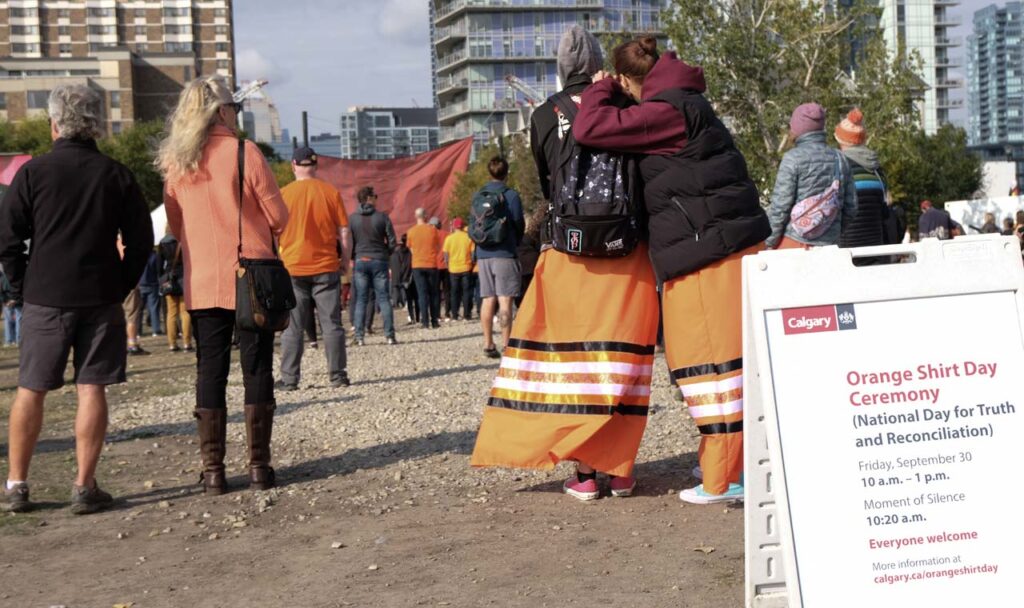Calgarians come out in force in a quest for understanding and healing

Calgarians gathered by the hundreds at historic Fort Calgary to commemorate the National Day for Truth and Reconciliation on Friday, Sept. 30, 2022.
“Today, we remember the children. We remember the children who did not come home from Indian residential schools. We acknowledge the experience of survivors and their resulting intergenerational trauma,” said Chris Arthurs, general manager of People, Innovation and Collaboration Services (PICS).
The event, organized by the City of Calgary, honoured residential school victims and survivors by way of prayer, song, and dance. By far, the most stirring were first-hand accounts from residential school survivors.
Elder Wanda First Rider was only four years old when she was forced away from her family.
“I witnessed a lot of violence. I witnessed sexual abuse. I witnessed a lot of physical and mental abuse,” she said.
Central to the residential school experience was the forcible instruction of the English language.
“At the time when I was in Crowfoot School, we were told not to talk in our native language, so I was a very quiet guy, afraid to talk,” said elder Clement Leather, a prominent spiritual grandfather in Calgary’s Indigenous community.
“I didn’t know who I was, and I didn’t know how to express myself,” said First Rider.
“Where I come from, we had 117 who didn’t make it home, and their names are probably on the flag behind us,” she added.

The massive orange banner, hung in an aerial salute formation between two fire department ladder trucks, served as a backdrop for the event. It featured 2,879 names from the Truth and Reconciliation Commission’s (TRC) memorial register and a large blank space representing the thousands of children whose names are not yet record
“We refer to this banner as an incomplete list,” said fire Chief Steve Dongworth.
Despite its sombre premise, the Orange Shirt Day ceremony was also one of hope, with listening, learning, and understanding as harbingers for truth and reconciliation as a predominant theme.
“I encourage all of you today who are not Indigenous to listen, to hear the stories, the sound of drumming and singing, the prayer,” said Arthurs. “Understand these oral methods of communication are incredibly powerful,”
According to lifelong Calgarian Mackenzie Daunheimer, he is actively learning about this piece of Canadian history.
“I know a little bit, but not as much as I probably should,” he said.
Dr. Niigaanwewidam Sinclair, professor of native studies at the University of Manitoba and son of Murray Sinclair, former chairman of the TRC, recommends many actions that Calgarians can do beyond wearing an orange shirt, starting with reading the commission’s 94 calls to action, the calls to justice for the Inquiry into Missing and Murdered Indigenous Women and Girls, and The Royal Commission on Aboriginal Peoples (RCAP) report from 1996.
“You can go out, and you can spend time and get to know people from the community. You can attend events,” he said. “And if you have an Indigenous person in your life, tell them how important they are to you. Tell them they are valued.”

For Calgarians, the White Goose Flying Report is also an essential resource.
“When you go home today, please use the City of Calgary website, seek out the Indigenous awareness webpage, and learn more about the Indigenous identities and cultures, our shared past, and our journey forward together,” added Arthurs.
“There have been, and will continue to be, times and days when we will amplify Indigenous voices,” said Mayor Jyoti Gondek. “Today, however, is a day for us to listen.”